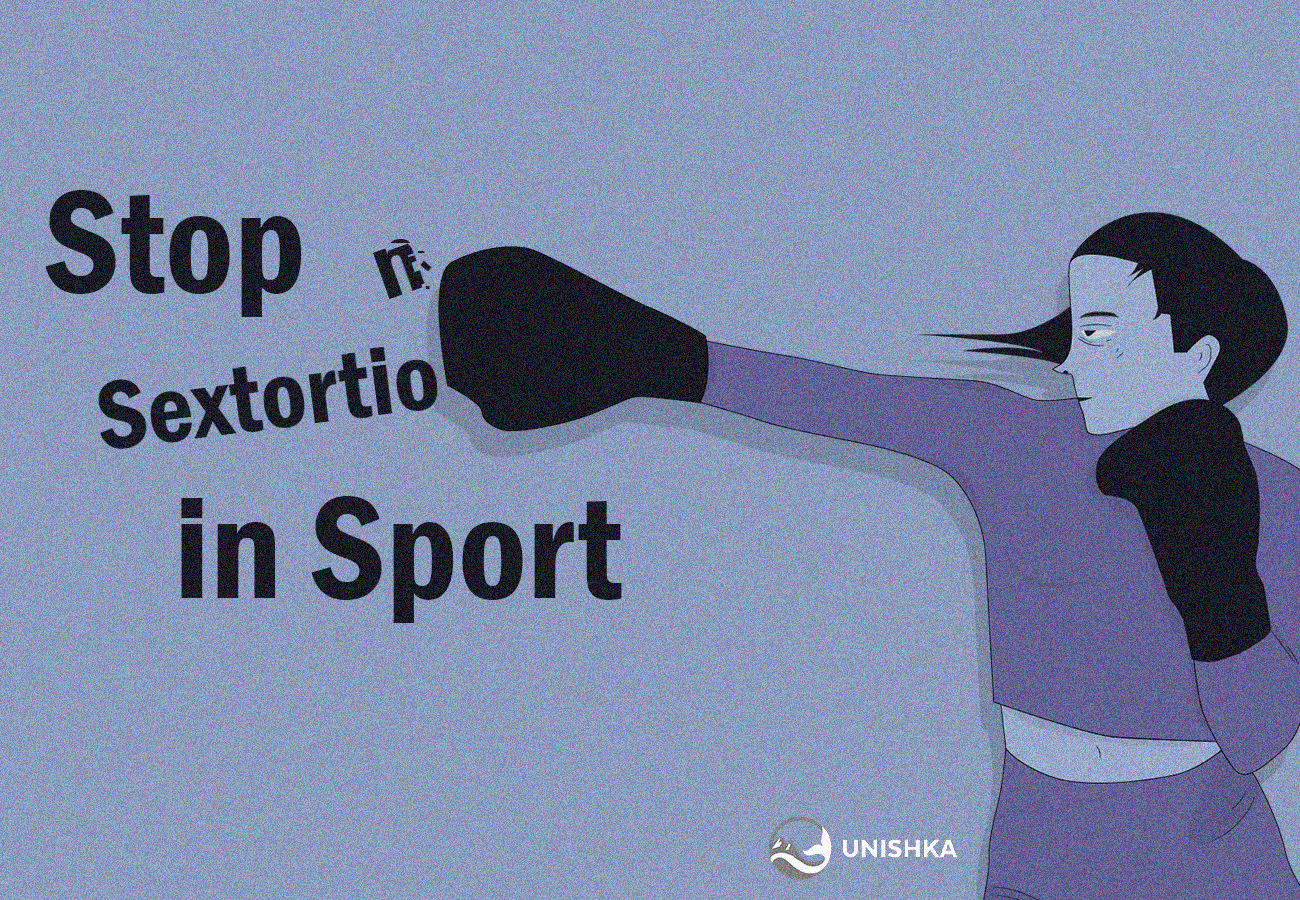
STOP SEXTORTION IN SPORT
23 May 2022 (Transparency International)
The sport sector is alarmingly vulnerable to sextortion, and sport organisations must urgently address the hierarchies, systems and cultures that drive and cover up this abuse.
This article addresses the sensitive topic of sexual violence and may be upsetting to some readers. Reader discretion is advised.
The team doctor for USA Gymnastics, Larry Nassar, sexually abused over 300 girls. This took place over decades and the victims/survivors ranged from amateur athletes to Olympic medallists. He exploited the power imbalance between these vulnerable people and himself as a senior official – because young athletes are expected to defer to an authority figure who could jeopardise their place in a team or even their career, many victims/survivors felt they couldn’t refuse the abusive behaviour.
This kind of sexual abuse is known as sextortion, a form of corruption in which those with power abuse it to obtain a sexual benefit. It occurs across the globe and affects people in many sectors, from refugees trying to cross borders to those seeking medical care. It also goes largely unreported and uninvestigated, and a new report by Transparency International shows that the sport sector is no exception.
Larry Nassar was finally jailed in 2018, but complaints were made about him since 1997 at Michigan State University, where he also abused his senior position. The university waited until 2014 to investigate him and then dismissed the victim/survivor’s claims. USA Gymnastics protected Larry Nassar and other abusers with what’s been described as a long pattern of hushing up complaints about sexual abuse. Those who were abused have said that they trusted these organisations and were let down by them, with medals and sponsorship deals being prioritised over safety.
This is one of the biggest scandals in sports history, but sextortion continues to happen. Victims/survivors are let down by sport organisations all over the world, from the president of the Haiti Football Federation being accused of giving players a choice between sexual abuse and expulsion from the national training centre to Mali’s national basketball federation covering up decades long sexual abuse by officials. And the scale is equally shocking – for example, in Germany, one in three elite athletes experience sexual violence, with many cases involving the abuse of power.
This undermines both the right that everyone has to safely access sport and the positive effect that this activity can have on society – through progressive role models and fulfilling, community-focused activities, sport can shape people’s values and behaviour for the better. Instead, many people looking forward to a bright future in sport suffer violence and trauma.
Why are abusers able to act with impunity?
Many of the sector’s susceptibilities to abuse stem from sport organisations’ insistence on autonomy in all areas, including ones that don’t affect core sporting functions. Resistance to external regulation and investigation means many operate with wide margins of discretion in their decision-making. Consequently, few have taken steps toward meaningfully changing their systems, cultures and male-dominated hierarchies.
Lack of reform has concentrated power in the hands of men over decades. The resulting sexist and hyper-masculine environments provide fertile ground for “old boys’ clubs” that protect the status quo. This ensures that men in power can exploit vulnerable people and expect their peers to ignore abuse or even help conceal it.
The widespread culture of silence in the sport sector also persists because sport organisations are often more concerned with protecting their reputation than meeting the needs of victims/survivors or learning from their mistakes.
The nature of coach/athlete relationships, which are frequently characterised by dependency and unclear boundaries, carries specific risks for sexual abuse. Close physical and emotional contact is common and often largely unsupervised, which provides opportunities for abuse to go undetected. Athletes are conditioned to tolerate abuse and to put the well-being of the team above their own so abuse tends to go goes unreported.
When athletes do speak up, they are often treated with distrust or contempt, and may face retaliation. This can take the form of mistreatment, threats and exclusion from teams and important events.
Our research identifies the weaknesses in sport organisations’ systems that make long -term sextortion possible. Many have failed to develop adequate internal prevention, detection and reporting mechanisms for abuse. Reporting mechanisms tend to lack independence and do not give people safe, trusted opportunities to inform organisations about concerns.
There’s often a lack of capacity and expertise to detect and investigate reports of abuse, with the parties accused in many cases either being senior leaders of the organisations or the abuse happening under their watch. This brings into question the extent to which those tasked with investigating and sanctioning complaints can act independently from their employers or superiors.
How to make sport safe from sextortion: our recommendations
To end sextortion, sport organisations and governments must act now. It’s vital to prevent abuse before it happens with a transparent culture and strong prevention frameworks such as the adoption of codes of conduct and transparent criteria for decision-making. Organisations must change the culture of objectification, including through education and awareness-raising on various forms of sexual abuse and sexism more broadly. To stop power from being concentrated among men, they must also introduce term limits for senior officials where appropriate and promote the participation of women and underprivileged communities in governance and decision-making.
Sport organisations should also introduce safe, effective internal and centralised reporting mechanisms, independent investigation and sanctioning, and clear sanctioning regimes for sextortion at all levels.
Governments should regulate organisations and condition funding for them on meaningful reform. Collecting data on sextortion across the sport sector will build an understanding of this understudied subject. Governments should also appraise whether existing legal frameworks ensure effective prosecution of sextortion and should then legislate to fill any gaps.



